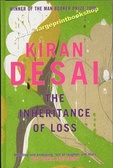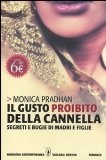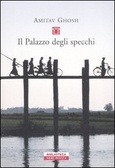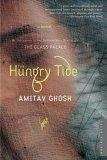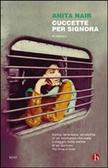I found a way to recover part of my old blog content, so I decided to rerun some posts from that, mainly reviews of books I liked. The following review was first published in April 2008. (All tagging is new, and I’m afraid I don’t have any means of saving the old blog comments.)
***
The book: Amitav Gosh, The Hungry Tide
The edition: Houghton Mifflin/Mariner Books, 2005. I did neither understand nor like the cover, but all in all this edition carried an Indian atmosphere around it, maybe due to the blue courtesy pages.
The story: it’s not easy to summarize this book without giving away anything, but I’ll try (please beware: spoilers possible!). At the very beginning, Piya and Kanai meet on a train towards the “tide country,” the jungle-and-river-lattice region called Sundarbans. Piya is a caetologist on her way to study river dolphins on the Ganga River. Kanai is a poliglot translator on his way to visit his aunt Nilima: she has recently found a notebook written by her long-deceased husband Nirmal and addressed to Kanai. On arrival they separate, and from there on into about two-thirds of the book, as Kanai reads Nirmal’s notebook, chapters alternate between what happens to Piya and the story written by Nirmal.
Piya starts on her search. On the very first day she falls in the water and a fisherman jumps in to save her, so she decides to travel with this man, Fokir, and his son Tutul. It turns out to be a good solution because he knows the river very well and knows where to find dolphins. Half through the book, they reach Lusibari, where Kanai is, and he too moves on with them as an interpreter, but he was not really needed, as Fokir and Piya understood each other perfectly even without a language in common.
Nirmal’s story is about his involvement with an attempt at resettling on a tide country island by a group of refugees, among them also Fokir’s mother. It includes also parts on Nirmal and Nilima’s story, on Kanai’s own, on Indian history and, more often, on Indian/tide country mithology.
In the rest of the book: a genocide, an encounter with dolphins, a crocodile attack, a rainbow made by the moon’s light, a tiger killing and another one killed, a trial by ordeal, a typhoon (actually, two), some romance, and some cups of tea.
The first sentence:
Kanai spotted her the moment he stepped onto the crowded platform: he was deceived neither by her close-cropped black hair nor by her clothes, which were those of a teenage boy — loose cotton pants and an oversized white shirt.
The last sentence:
“That’s the difference between us. For me, home is wherever I can brew a pot of good tea.”
My opinion: a beautiful story about understanding, about different cultures and how they clash, but also about ways of crossing between cultures. A rich and compelling writing. A very good book. Rating: 8/10.
I liked the reasoning on words, on different languages, and also on how communication can happen without a common language, while it may still not happen when a common language exists.
How do you lose a word? Does it vanish into your memory, like an old toy in a chest, and lie hidden in the cobwebs and dust, waiting to be cleaned out or rediscovered?
On the other hand, I disliked the way relationships were portrayed. Every relationship was considered to be love/romance. I mean, why can’t some people (I’m talking the author, here) understand that there may be a deep understanding between two persons even without a romantic lien? (My only possible anwer to that would be: in a place such as the jungle, relationships have to be more black-or-white than elsewhere.) At the same time I was disappointed by the Nirmal/Nilima marriage: in the opening of the book they are depicted as two remarkable persons, people to look up to with respect, both for what they accomplished in the tide country, and for the ripeness of their own relationship. But then, here’s how Kanai describes them well into the book:
“As I see it, Nirmal was possessed more by words than by politics. There are people who live through poetry, and he was one of them. For Nilima, a person like that is very hard to understand”
Finally, I’d like to share a passage that really disturbed me:
“The worst part was not the hunger or the thirst. It was to sit here, helpless, and listen to the policemen making their annoucements, hearing them say that our lives, our existence, were worth less than dirt or dust. ”This island has to be saved for its animals, it is a part of a reserve forest, it belongs to a project to save tigers, which is paid for by people from all around the world.” … Who are these people, I wondered, who love animals so much that they are willing to kill us for them? Do they know what is being done in their name?”
You can’t not be an environmental activist, but again, you can’t be one. You can’t not protect tigers, but you can’t leave humans in danger. In a way, it’s a book about helplessness, too.
